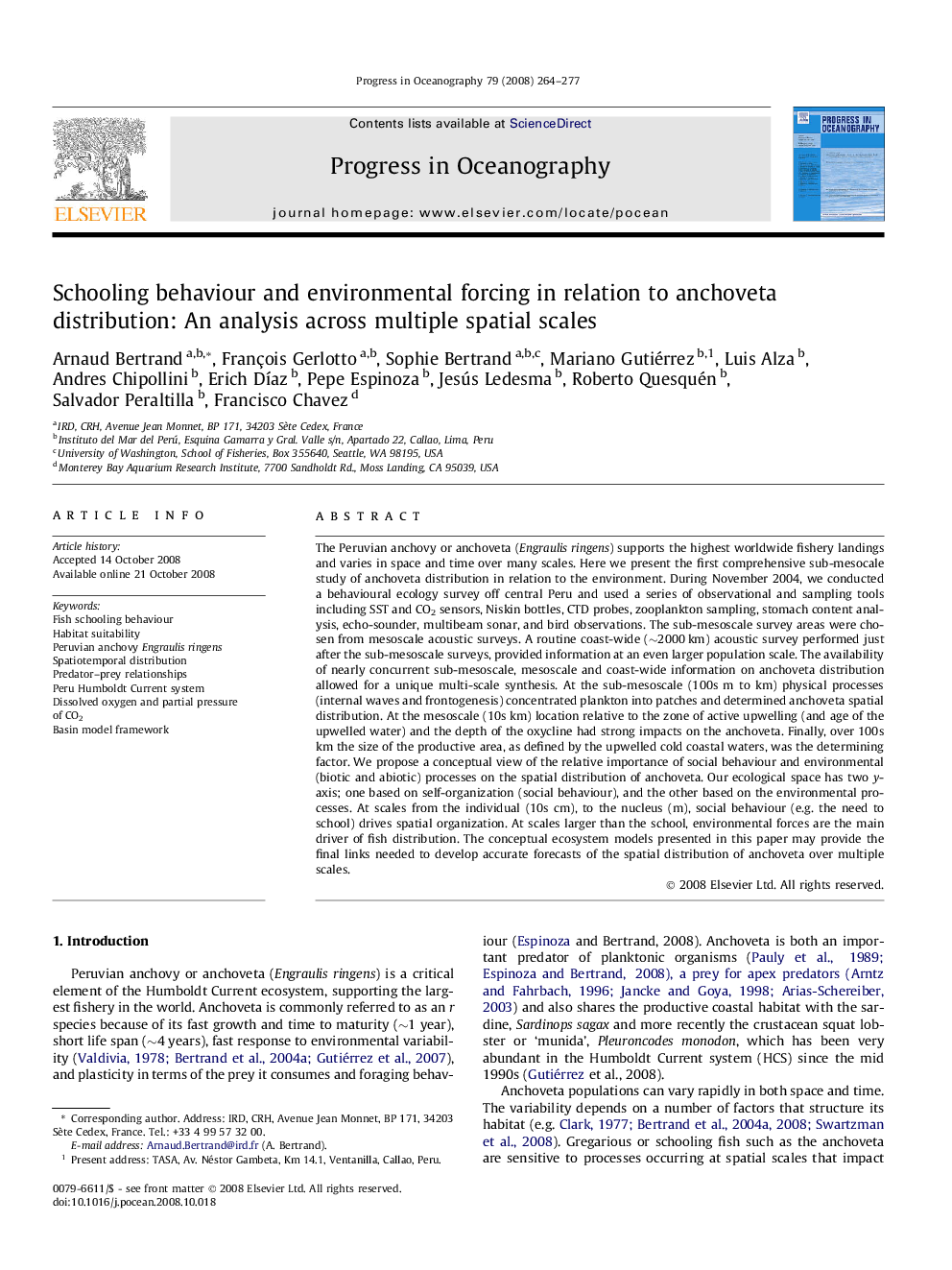| کد مقاله | کد نشریه | سال انتشار | مقاله انگلیسی | نسخه تمام متن |
|---|---|---|---|---|
| 4553638 | 1627969 | 2008 | 14 صفحه PDF | دانلود رایگان |
عنوان انگلیسی مقاله ISI
Schooling behaviour and environmental forcing in relation to anchoveta distribution: An analysis across multiple spatial scales
دانلود مقاله + سفارش ترجمه
دانلود مقاله ISI انگلیسی
رایگان برای ایرانیان
کلمات کلیدی
موضوعات مرتبط
مهندسی و علوم پایه
علوم زمین و سیارات
زمین شناسی
پیش نمایش صفحه اول مقاله

چکیده انگلیسی
The Peruvian anchovy or anchoveta (Engraulis ringens) supports the highest worldwide fishery landings and varies in space and time over many scales. Here we present the first comprehensive sub-mesocale study of anchoveta distribution in relation to the environment. During November 2004, we conducted a behavioural ecology survey off central Peru and used a series of observational and sampling tools including SST and CO2 sensors, Niskin bottles, CTD probes, zooplankton sampling, stomach content analysis, echo-sounder, multibeam sonar, and bird observations. The sub-mesoscale survey areas were chosen from mesoscale acoustic surveys. A routine coast-wide (â¼2000Â km) acoustic survey performed just after the sub-mesoscale surveys, provided information at an even larger population scale. The availability of nearly concurrent sub-mesoscale, mesoscale and coast-wide information on anchoveta distribution allowed for a unique multi-scale synthesis. At the sub-mesoscale (100s m to km) physical processes (internal waves and frontogenesis) concentrated plankton into patches and determined anchoveta spatial distribution. At the mesoscale (10s km) location relative to the zone of active upwelling (and age of the upwelled water) and the depth of the oxycline had strong impacts on the anchoveta. Finally, over 100s km the size of the productive area, as defined by the upwelled cold coastal waters, was the determining factor. We propose a conceptual view of the relative importance of social behaviour and environmental (biotic and abiotic) processes on the spatial distribution of anchoveta. Our ecological space has two y-axis; one based on self-organization (social behaviour), and the other based on the environmental processes. At scales from the individual (10s cm), to the nucleus (m), social behaviour (e.g. the need to school) drives spatial organization. At scales larger than the school, environmental forces are the main driver of fish distribution. The conceptual ecosystem models presented in this paper may provide the final links needed to develop accurate forecasts of the spatial distribution of anchoveta over multiple scales.
ناشر
Database: Elsevier - ScienceDirect (ساینس دایرکت)
Journal: Progress in Oceanography - Volume 79, Issues 2â4, OctoberâDecember 2008, Pages 264-277
Journal: Progress in Oceanography - Volume 79, Issues 2â4, OctoberâDecember 2008, Pages 264-277
نویسندگان
Arnaud Bertrand, François Gerlotto, Sophie Bertrand, Mariano Gutiérrez, Luis Alza, Andres Chipollini, Erich DÃaz, Pepe Espinoza, Jesús Ledesma, Roberto Quesquén, Salvador Peraltilla, Francisco Chavez,